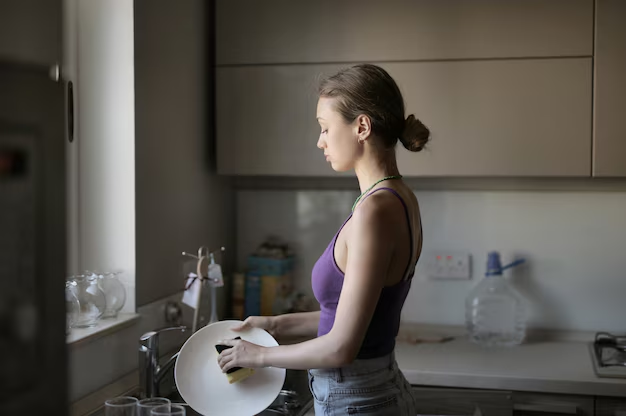How to Activate the Water Valve for Your Refrigerator: A Comprehensive Guide
Is your new refrigerator ready for use, but you're puzzled about how to connect it to the household water supply? Refrigerators with built-in water dispensers and ice makers require a steady supply of water to function correctly. Turning on the water valve to get things running can seem daunting, but this guide will walk you through each step with confidence and ease. Let's dive into the essential aspects of getting your refrigerator's water valve turned on and avoid common pitfalls along the way.
Understanding the Role of a Water Valve
What is a Water Valve?
A water valve is an essential component of your plumbing system that controls the flow of water to various appliances, including your refrigerator. It's typically located near the back of the refrigerator or sometimes under the sink, depending on the configuration of your home plumbing.
Why is It Important for Your Refrigerator?
For refrigerators equipped with water dispensers or ice makers, the valve ensures a consistent supply of water. This is critical for making ice, dispensing cold water, and maintaining proper appliance function. Incorrectly setting up the valve can lead to a lack of water, poor ice production, or even leaks.
Locating Your Refrigerator's Water Valve
Common Locations
Here are some typical places to find the water valve in your home:
- Behind the Refrigerator: Most refrigerators will have the water connection at the rear. Pull the appliance gently away from the wall to access it.
- Under the Kitchen Sink: If not directly behind the refrigerator, the valve is often placed under the sink.
- Basement or Utility Area: In some homes, especially those with a basement, the shut-off valve could be located there along with other utilities.
How to Spot a Water Valve
Typically, the valve is a small, hand-turned lever or knob attached to a copper or plastic water line. Look for signs, such as:
- A blue or red knob indicating the flow of hot or cold water.
- A small lever on a copper or plastic line.
- A label on the valve indicating its function.
Steps to Turn On the Refrigerator Water Valve
Safety First
Before beginning, ensure your safety by following these practices:
- Unplug the Refrigerator: This will prevent accidental electrical shocks.
- Read the Manual: Check the appliance’s owner manual for specific instructions related to water connections.
- Inspect the Area: Be cautious of any water puddles or leaks that could cause slips or electrical hazards.
Turning On the Water Valve
Here's a step-by-step guide:
- Identify the Right Valve: Confirm that you have located the correct valve connected to the refrigerator.
- Turn the Valve: If it's a knob, twist it counterclockwise to open. If it's a lever, move it to the parallel position with the pipe to allow water flow.
- Check for Leaks: Once turned on, cautiously check for any leaks or dripping water around the connection points.
- Restore Power to the Refrigerator: Plug the refrigerator back in and await initiation to ensure everything is working correctly.
Troubleshooting Common Issues
No Water Flow
- Verify Connection: Double-check the valve position and ensure it’s fully open.
- Inspect the Line: Examine the water line for kinks or bends that could block water movement.
Leaking Water
- Check Seals: Ensure that connectors and seals are tight.
- Assess Valve Condition: If the valve itself is leaking, you might need a replacement or consultation with a plumbing professional.
Ice Maker Not Working
- Test the Dispenser: If the water flows when using the dispenser but not the ice maker, check settings or reset the ice maker.
Enhancing Refrigerator Efficiency with Proper Valve Use
Regular Maintenance
- Inspect Quarterly: Regularly check the water line and valve for any signs of wear or damage.
- Clean the Nozzle: Maintaining an unclogged water dispenser and ice maker is essential for their efficiency.
Energy-Saving Tips
- Ensure Proper Sealing: A well-sealed connection prevents leaks and conserves water, contributing to energy efficiency.
- Regularly Monitor Usage: Keep an eye on your appliance's performance to ensure it doesn’t overwork due to insufficient water supply.
Summary of Key Steps 📝
Here’s a quick summary to guide you through turning on your refrigerator's water valve:
- 🔍 Locate the Water Valve: Check behind the refrigerator or under the kitchen sink.
- 🔄 Turn the Valve On: Rotate the knob counterclockwise or align the lever parallel to the pipe.
- 🚿 Check for Leaks: Inspect the connections thoroughly for any leaks.
- 🔌 Reconnect Power: Once verified, plug your refrigerator back in.
- 🔧 Troubleshoot Issues: Address no water flow or leaks promptly for optimal operation.
Final Insights
Embarking on setting up a refrigerator's water supply system might initially seem complicated, but it's ultimately rewarding when properly done. Understanding where components are situated, knowing precisely how to turn the valve, and conducting regular maintenance are crucial to keeping things running smoothly. Stay empowered to manage your appliances with ease and bring streamlined comfort to your home’s routine.
